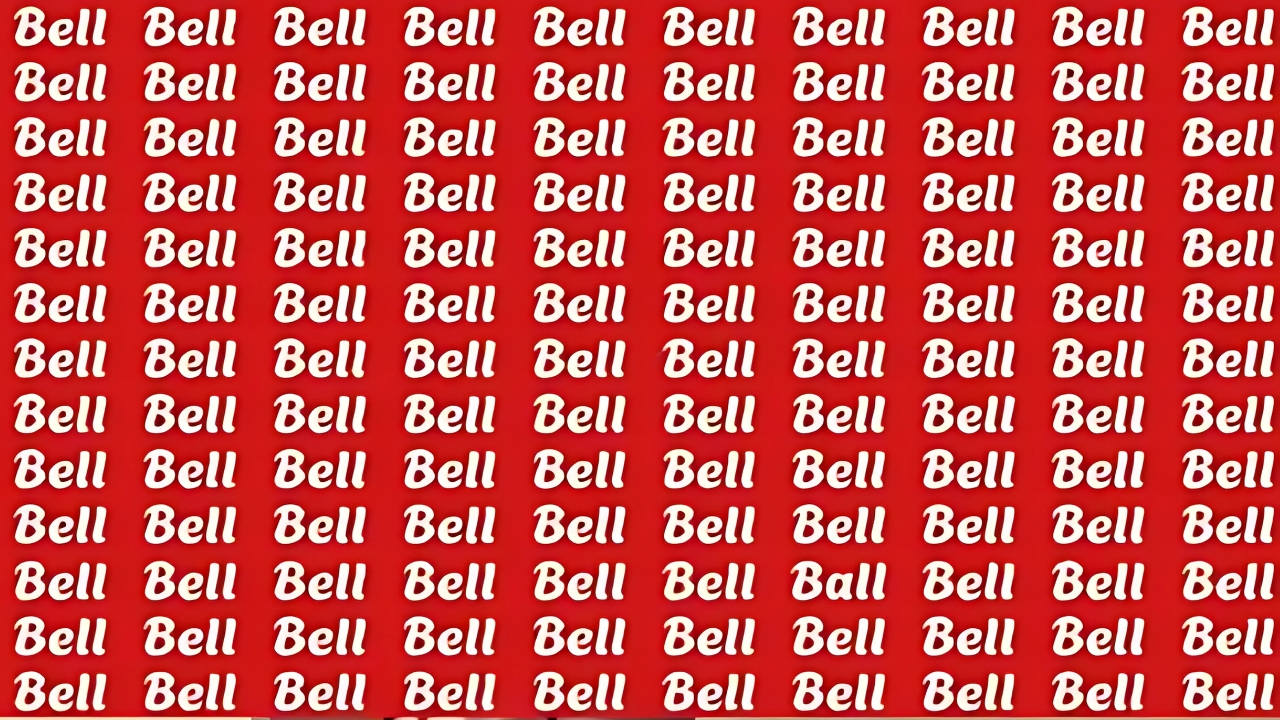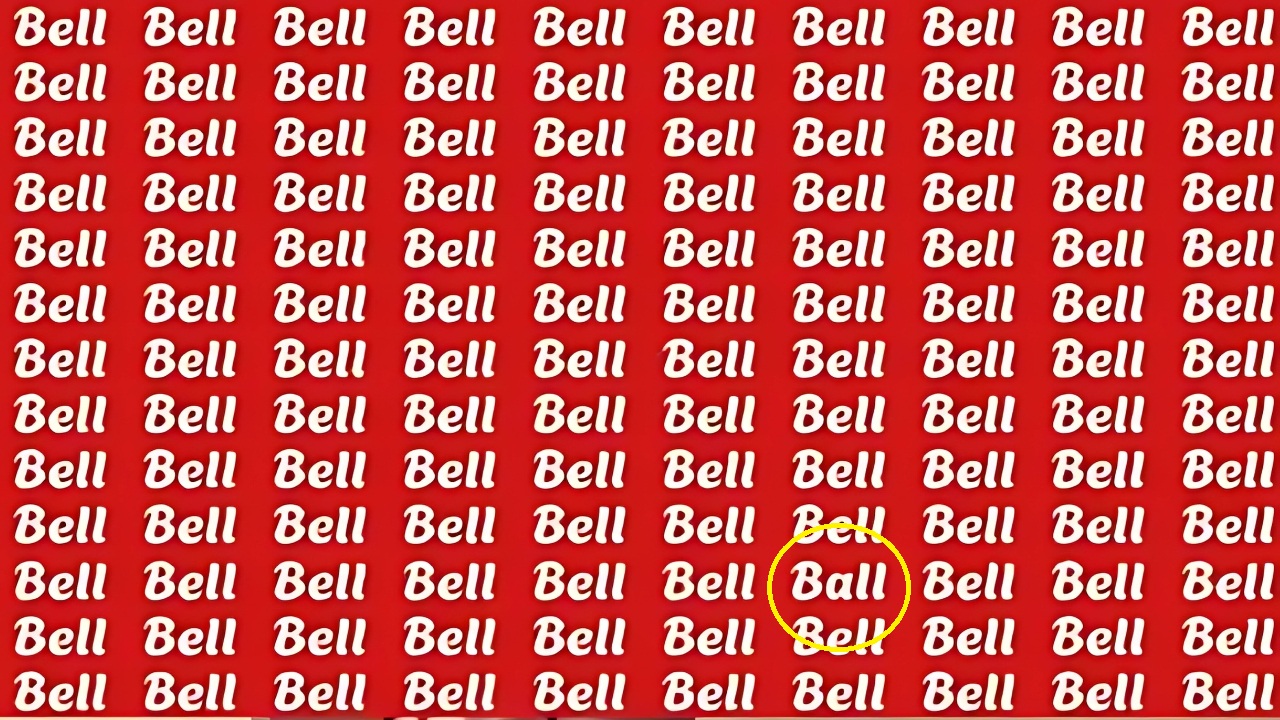Optical Illusion Challenges : In our rapidly evolving digital world, the ability to spot minute details and process visual information quickly has become more valuable than ever before.
Whether you’re scrolling through endless social media feeds, analyzing complex data presentations, or simply navigating busy streets, your visual processing skills determine how effectively you interact with your environment.
This brings us to an fascinating phenomenon that has captured the attention of psychologists, educators, and puzzle enthusiasts alike: optical illusion challenges that test our detective-like observation abilities.
The Science Behind Visual Detective Work
When we examine why certain individuals excel at spotting hidden elements in visual puzzles while others struggle, we uncover a complex interplay of neurological processes. The human brain processes visual information through multiple pathways, each responsible for different aspects of what we see.
Some people naturally possess what researchers call “enhanced selective attention” – the cognitive ability to focus on specific details while filtering out irrelevant information.
Recent studies in cognitive psychology have revealed that individuals who excel at visual detection tasks often share certain characteristics with professional detectives and investigators. They demonstrate superior pattern recognition abilities, enhanced working memory capacity, and most importantly, the patience to methodically scan visual fields rather than relying on quick glances.

The fascinating aspect of visual puzzle challenges lies in their ability to reveal these underlying cognitive strengths. When presented with a grid containing hundreds of similar words with one subtle variation hidden among them, your brain must overcome its natural tendency to group similar items together.
This process, known as “perceptual grouping,” usually helps us navigate the world efficiently, but it can become a hindrance when we need to identify anomalies.
Understanding the Ball-Among-Bell Challenge
One of the most intriguing examples of this phenomenon involves finding the word “Ball” hidden among numerous repetitions of the word “Bell.”
At first consideration, this might seem straightforward – after all, we’re simply looking for one letter difference. However, the challenge becomes significantly more complex when you factor in time pressure and the sheer volume of text to process.
The difficulty stems from several psychological factors. First, our brains are pattern-seeking machines that automatically group similar visual elements together. When we see repeated instances of “Bell,” our visual system creates a mental template and begins to expect this pattern everywhere. This expectation can cause us to overlook the subtle variation when “Ball” appears.
Second, the specific letters involved in this challenge – ‘e’ and ‘a’ – share enough visual similarity that rapid scanning can easily miss the difference. The rounded shape of both letters, particularly in certain fonts, can appear nearly identical in our peripheral vision. This is why successful completion of such challenges requires not just good eyesight, but also strategic visual scanning techniques.
The Detective’s Methodology
Professional investigators and individuals who consistently excel at visual detection tasks employ specific strategies that can be learned and practiced. These methodologies transform random searching into systematic exploration, dramatically improving success rates.
The first principle involves structured scanning patterns. Rather than allowing your eyes to dart randomly across the visual field, effective scanners develop systematic approaches. Some prefer horizontal row-by-row examination, while others find success with vertical column scanning or even diagonal patterns. The key lies in maintaining consistency and ensuring complete coverage without skipping areas.
Advanced practitioners often employ what psychologists term “peripheral awareness training.” This involves learning to use your peripheral vision effectively while maintaining focus on your primary scanning area. With practice, many people can train themselves to notice anomalies in their peripheral field while systematically scanning with their central vision.
Another crucial element involves managing the balance between speed and accuracy. While these challenges typically impose time limits, rushing often proves counterproductive. The most successful approach involves finding your optimal scanning speed – fast enough to cover the entire area within the time limit, but slow enough to actually process what you’re seeing.
Cognitive Benefits of Visual Training
Regular engagement with optical illusion challenges and visual detection tasks provides numerous cognitive benefits that extend far beyond entertainment value. Neuroscience research has demonstrated that these activities stimulate multiple brain regions simultaneously, creating what researchers call “cognitive cross-training.”
Enhanced attention control represents one of the most significant benefits. Individuals who regularly practice visual detection tasks show improved ability to maintain focus during demanding activities. This improvement transfers to academic performance, professional tasks, and even driving safety. The sustained attention required for these challenges strengthens the same neural pathways involved in deep work and concentrated study.
Working memory capacity also receives substantial benefits from visual training. Successfully completing these challenges requires holding multiple pieces of information in mind simultaneously – the target pattern you’re seeking, your current position in the scanning process, and the overall progress toward completing the task. Regular practice strengthens these working memory systems, improving performance across various cognitive domains.
Pattern recognition abilities undergo significant enhancement through consistent practice with visual puzzles. This skill proves invaluable in numerous professional contexts, from medical diagnosis and financial analysis to quality control and scientific research. The ability to quickly identify subtle patterns or anomalies represents a transferable skill that benefits many career paths.
The Psychology of Time Pressure
The time constraints typically imposed on these challenges introduce an additional layer of psychological complexity that mirrors real-world pressure situations. Understanding how time pressure affects visual processing can help explain why some individuals thrive under these conditions while others struggle.
When faced with time limits, our nervous system activates stress responses that can either enhance or impair performance. For some people, mild stress activation improves focus and processing speed – a phenomenon psychologists call “optimal arousal.” These individuals often perform better on timed challenges than untimed versions.
However, excessive time pressure can trigger anxiety responses that actually impair visual processing. When stressed, our visual field tends to narrow, reducing peripheral awareness and forcing us into tunnel vision. This state makes it much more difficult to spot anomalies that might appear outside our immediate focus area.
Learning to manage time pressure effectively involves developing what sports psychologists call “relaxed focus.” This state combines high attention levels with low anxiety, allowing for optimal visual processing under time constraints. Breathing techniques, positive self-talk, and regular practice all contribute to developing this valuable skill.
Practical Applications Beyond Entertainment
While visual detection challenges might appear to be simple entertainment, they mirror numerous real-world situations where quick, accurate visual processing proves crucial. Understanding these connections helps explain why developing these skills provides practical benefits.
In professional contexts, the ability to quickly spot anomalies or important details appears in numerous fields. Medical professionals must identify subtle changes in patient symptoms or diagnostic images. Quality control specialists need to detect defects in manufactured products. Financial analysts look for unusual patterns in data that might indicate opportunities or risks.
Even in daily life, enhanced visual processing skills provide significant advantages. Improved driving safety results from better ability to spot potential hazards in complex traffic situations. Enhanced security awareness helps identify suspicious activities or individuals in crowded environments. Better navigation skills develop through improved ability to process visual landmarks and spatial relationships.
The detective-like thinking required for these challenges also translates to improved problem-solving abilities. The systematic, methodical approach that works best for visual detection tasks proves equally valuable when tackling complex problems in work or personal life.
Training Your Visual Detective Skills
Developing superior visual detection abilities requires consistent practice and progressive skill building. Like physical fitness training, visual training benefits from regular, structured practice rather than sporadic intensive sessions.
Begin with simpler challenges and gradually increase difficulty levels. Start with visual puzzles that involve obvious differences and shorter time limits, then progress to more subtle variations and challenging time constraints. This progressive approach allows your visual system to adapt and improve without becoming overwhelmed.
Vary the types of visual challenges you practice. While word-finding puzzles like the Ball-among-Bell challenge provide excellent training, incorporating different types of visual tasks prevents skill stagnation. Try spot-the-difference puzzles, hidden object games, and pattern recognition challenges to develop well-rounded visual processing abilities.
Pay attention to environmental factors that affect your performance. Proper lighting, comfortable viewing distance, and minimal distractions all contribute to optimal visual processing. Creating consistent practice conditions helps isolate skill development from environmental variables.
Track your progress over time to maintain motivation and identify areas for improvement. Keep records of completion times, accuracy rates, and the types of challenges you find most difficult. This data helps guide your training focus and provides evidence of improvement that might not be immediately obvious.
The Future of Visual Intelligence
As our world becomes increasingly visual and information-dense, the ability to process visual data quickly and accurately becomes ever more valuable. The skills developed through optical illusion challenges and visual detection training represent just one aspect of what researchers term “visual intelligence” – the comprehensive ability to understand, interpret, and utilize visual information effectively.
Emerging technologies like augmented reality and virtual reality environments will likely place even greater demands on our visual processing capabilities. Individuals who have developed strong visual detection skills through practice with challenges like finding hidden words will be better prepared to navigate these complex visual environments.
Optical Illusion Answer

The detective-like thinking required for visual puzzles also aligns perfectly with the analytical skills needed in our data-driven economy. As more professions require the ability to extract meaningful patterns from large amounts of visual information, the cognitive skills developed through visual training become increasingly relevant and valuable.
Whether you view these challenges as entertaining brain teasers or serious cognitive training exercises, the benefits they provide extend far beyond the immediate satisfaction of successfully spotting a hidden word. The visual detective skills you develop through regular practice create lasting improvements in attention, focus, and analytical thinking that enhance both professional performance and daily life experiences.
So the next time you encounter a challenge to find “Ball” among hundreds of “Bell” repetitions, remember that you’re not just playing a game – you’re training your brain to become a more effective visual detective, developing skills that will serve you well in countless future situations.
